Black Oak Coffee is somewhat of an experiment. More than simply a laboratory for coffee roasting and extraction, we have set up the Third Wave of coffee model far outside the big city where, by now, it’s all taken for granted. Our home base, Ukiah, California, is a town of about 15,000, two hours north of San Francisco on Highway 101. We knew early in the process that if we were to be successful in this beautiful and pristine, but relatively small and isolated, place we needed a menu with a kind of generosity that made our customers feel welcome. We depend on the Starbucks converts, and we cannot afford to alienate him or her by saying “no” and explaining the virtues of the eight ounce latte. We needed our sweetened drinks to inspire the same reverence for taste as our espresso and drip coffee. We needed to reshape the Third Wave into one that could provide a welcoming experience for the uninitiated.
The Lovers Lane Latte
My partner, Keith, is a beekeeper as well as a coffee entrepreneur. He lives on Lovers Lane a few miles north of our café and roaster, and has a small business selling Northern California wildflower honey. We based our first drink on this highly prized local product, and in honor of its namesake farm, called it the Lovers Lane Latte.
The recipe is simple:
- 14 grams honey
- 34 grams espresso
- Milk steamed to 140 degrees to fill an 8 oz mug
- Garnish of local bee pollen
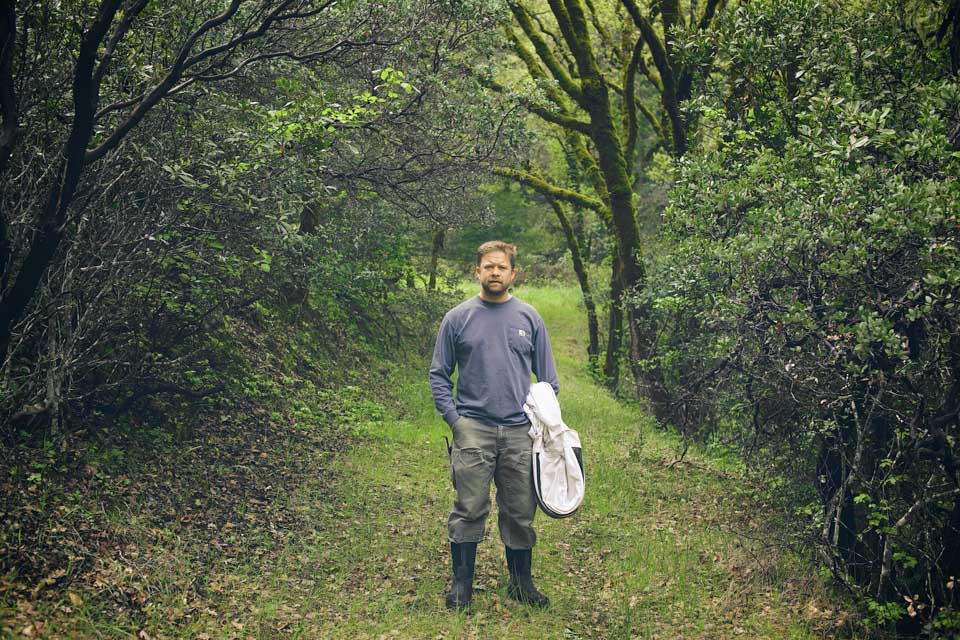
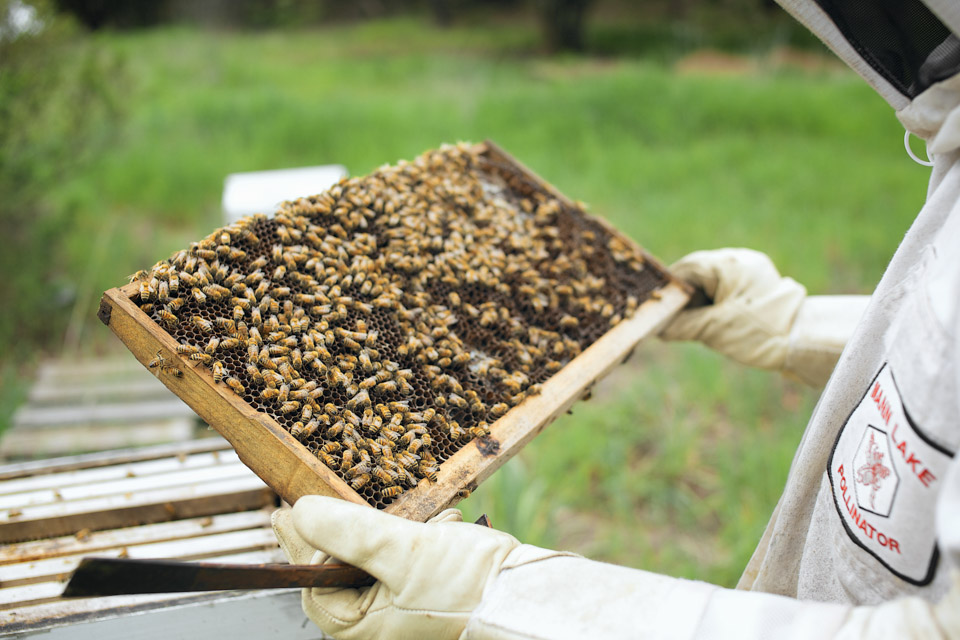
First, add honey to your serving vessel:
Northern California wildflower honey has a dense, concentrated flavor. The bees feast on pollen from a variety of flowers both wild and cultivated that grow in the hills and valleys of the Coastal Range, and they produce a robust, amber colored honey. The honey is usually harvested with an ample helping of smoke from smoldering oak chips between May and August, weather permitting.
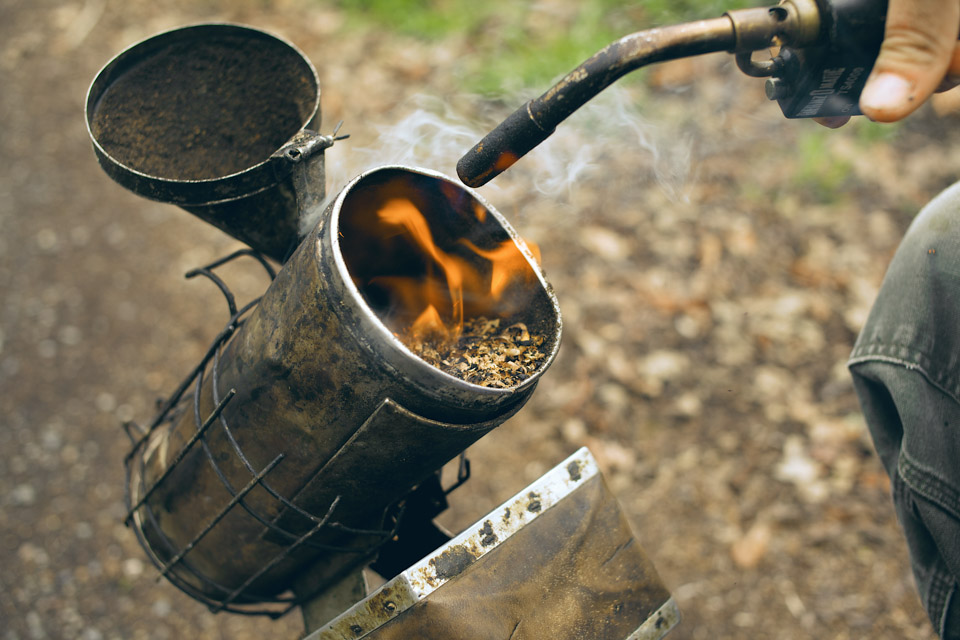
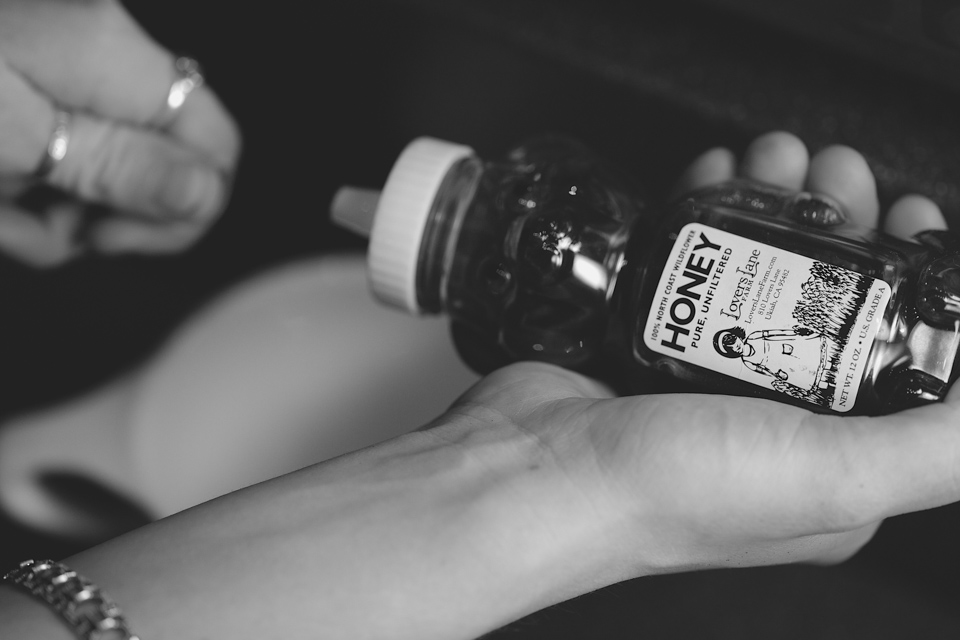
Second, adjust the grind for sweetness:
Espresso is, in our coffee microcosm, the best kind of ephemeral beauty. We are always chasing sweetness in an espresso, making fine adjustments on a knife edge between flabby and insipid on one side and excessively bright and astringent on the other. We make only one change in our process of attaining this sweetness—the grind. To adjust the grind, the barista turns a wheel which compresses a spring, moving the grinder’s burrs closer apart or further away. Each degree of rotation to the adjustment wheel represents a second’s difference or so in the time it takes to grind the desired weight of coffee. Every day, each degree of change reveals a different flavor profile.
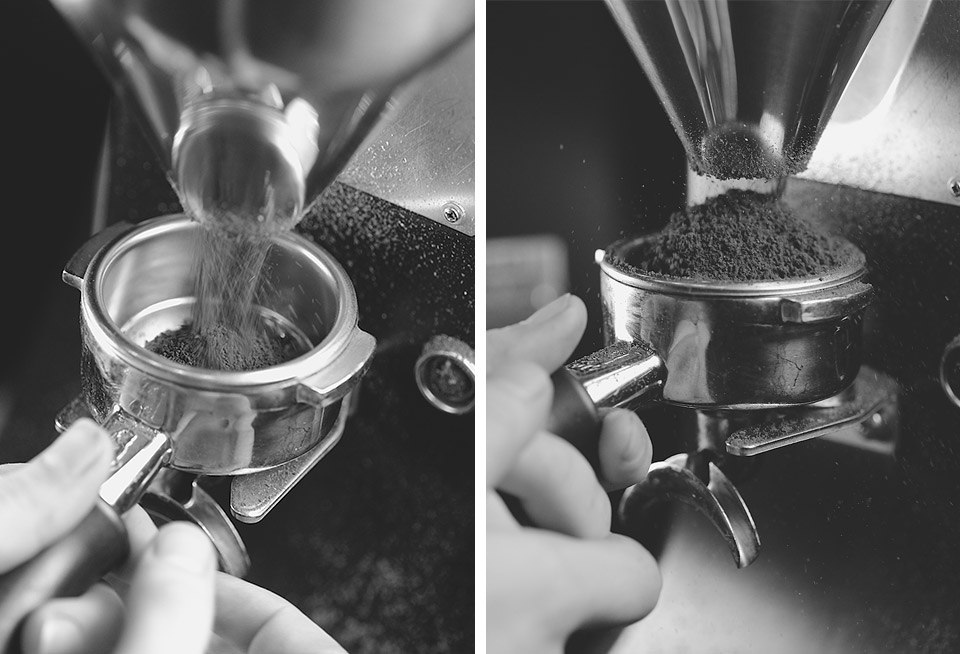
Third, groom the espresso grounds:
The most critical mechanical part of preparing a good espresso shot is your groom. Water always seeks the path of least resistance—great espresso requires this path to be as even as possible. The proper groom is performed with a straight and relaxed finger. A nice level surface with no pockets or cracks through which water can channel is the result. The finger, when stiff, will produce a cup in your basket, forcing the pressurized water through the center of the puck.
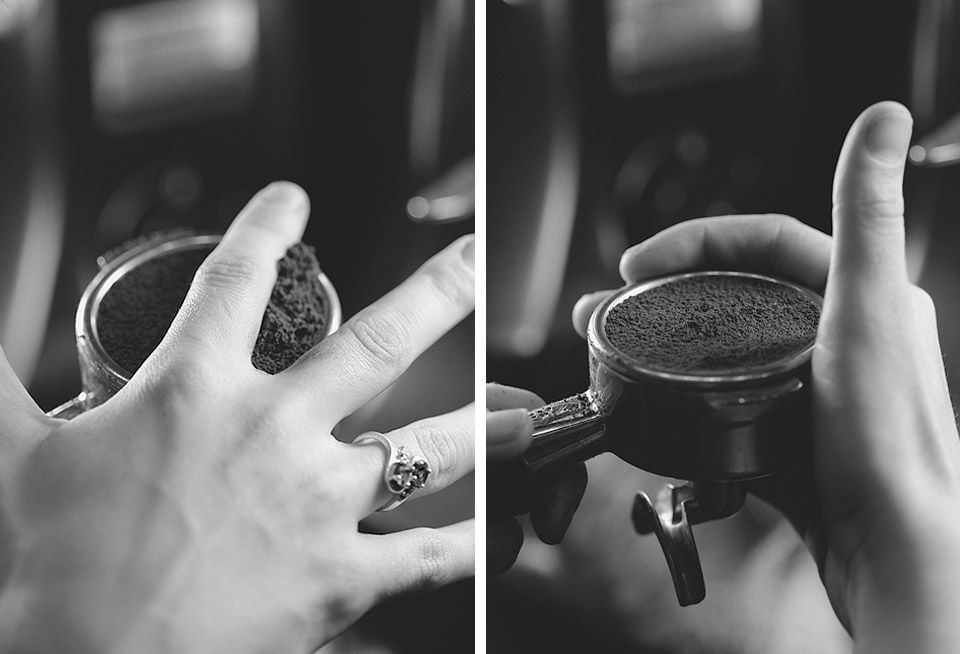
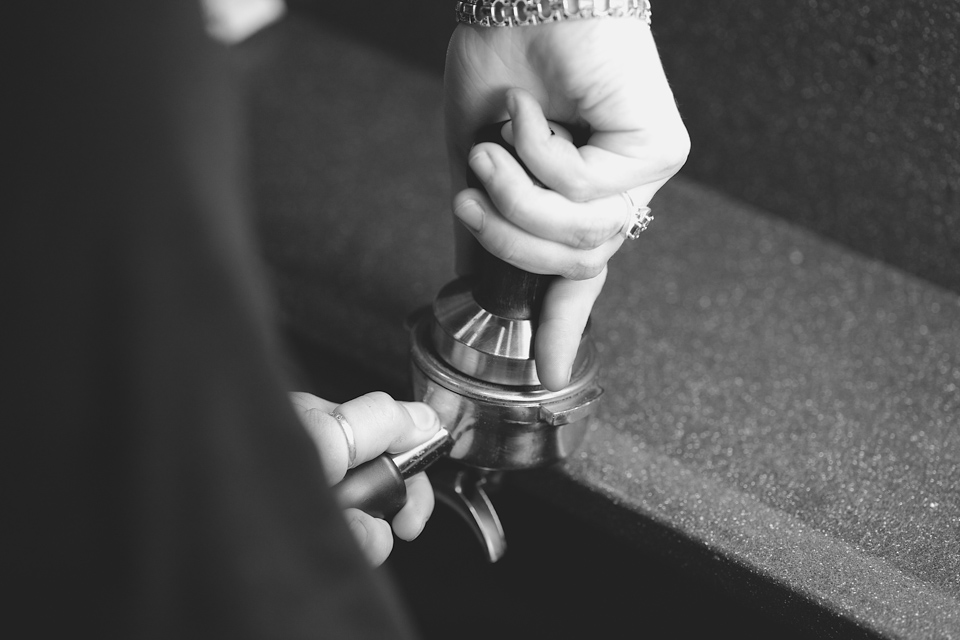
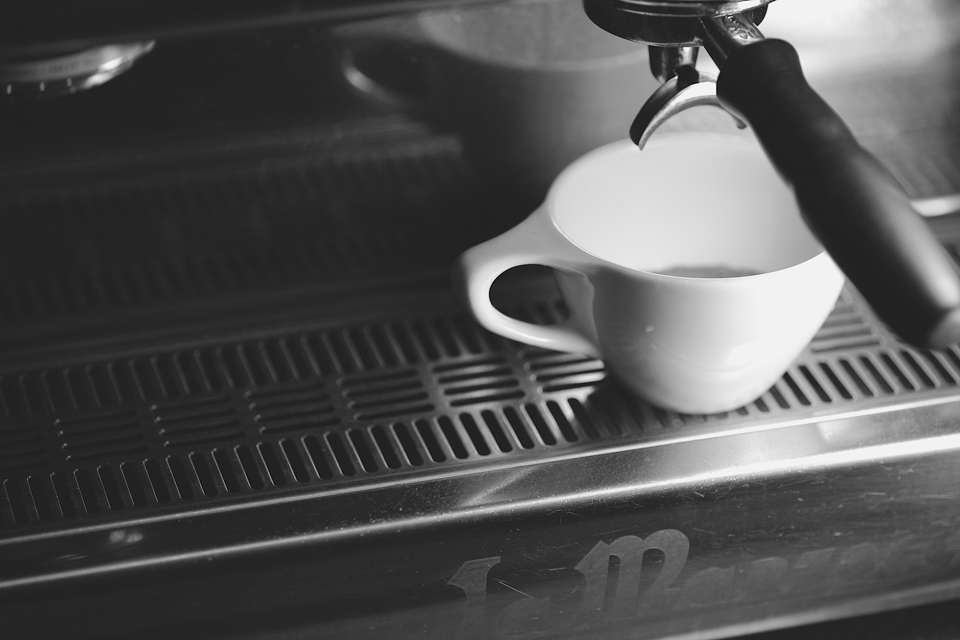
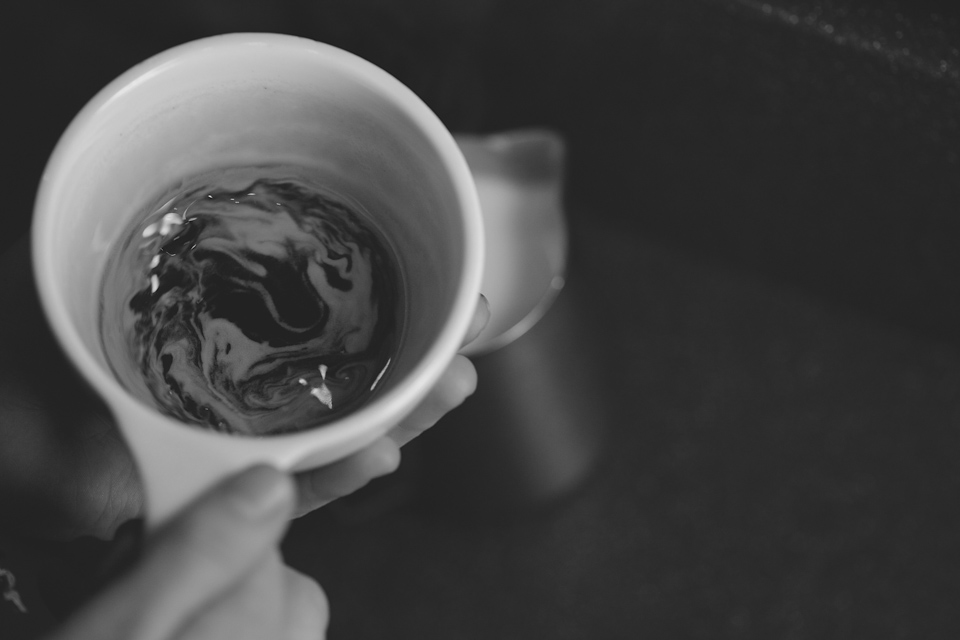
Fourth, steam the milk:
Fine milk texturing requires a balance of heat and air. Heat, introduced in the form of steam, heats the milk from its storage temperature of 40 degrees. Cold milk isn’t sweet, nor is milk that is scalding hot. For a latte, 140 is about perfect, perceptibly sweet with lactose sugars, but not excessively so. Air introduced in the first few seconds of the steaming process creates foam. This foam, formed as milk proteins bond to air bubbles, requires the hand of a skilled barista if it is to have a silky texture and the proper weight. Great foam is glassy, reflecting the overhead lights of the café in the pitcher’s vortex. Latte art is the final touch on a drink that is prepared using the proper techniques. It can be simple or elaborate, but it’s proper only when the texture of the foam is right.
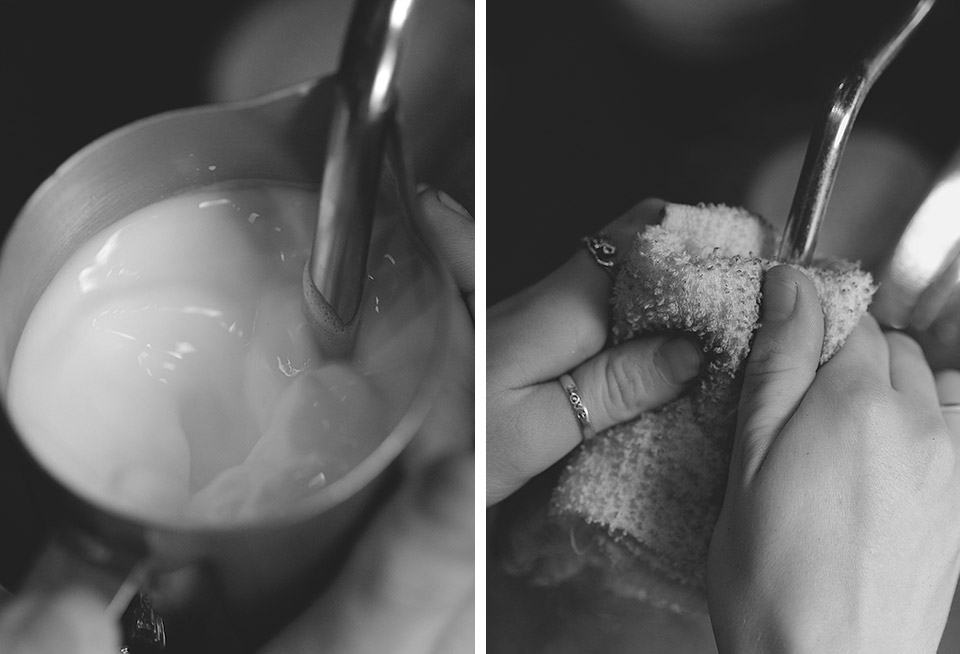
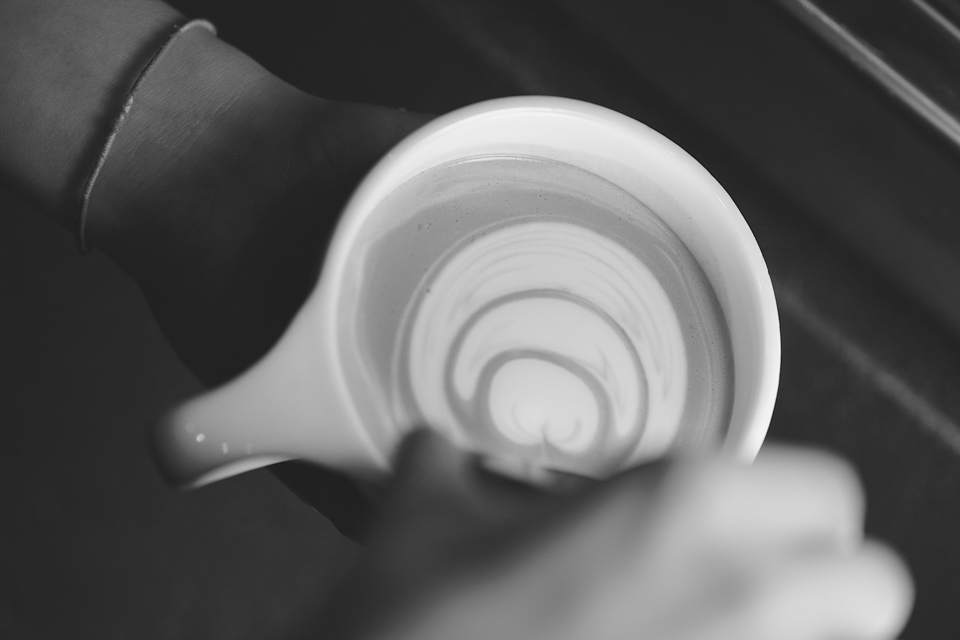
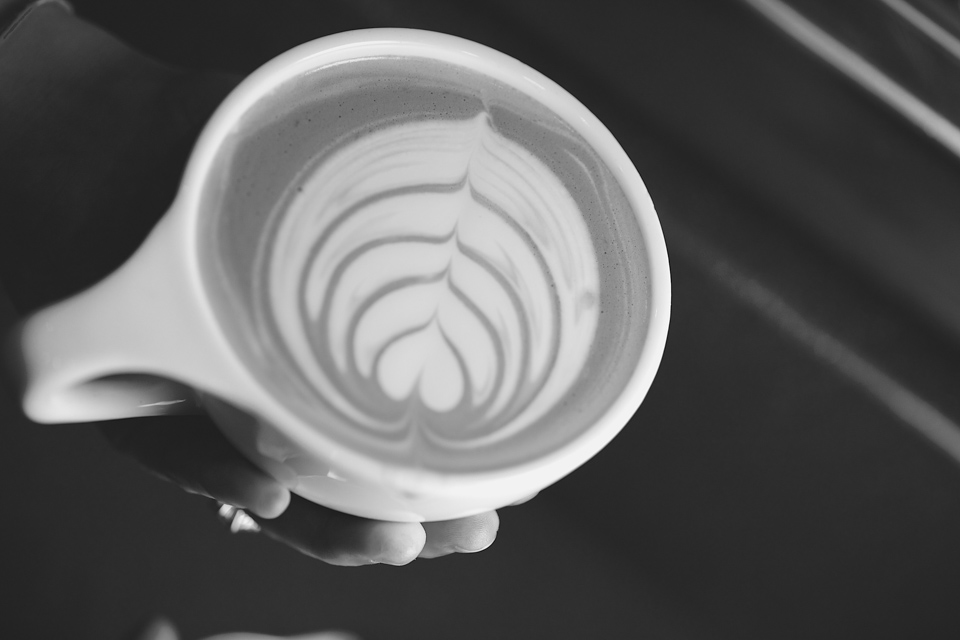
Finally, garnish:
As they alight from flower to flower, bees collect pollen by rubbing their legs on the stamens of flowers. Our local bees collect it on their legs like bread in a bicycle pannier, and they bring it back to their colonies as food for their larvae. Keith installs traps to capture a some of it while still allowing enough to get to the hungry baby bees. To complete our Lovers Lane Latte, we take a few spoonfuls of bee pollen and line the rim of the mug. The pollen, exposed to the warmth of the milk and espresso, starts to soften and melt into the foam. The result is a union of aroma, texture, taste and mouthfeel–sweet honey, bitter-sweet espresso, sweet milk, and complexity from the pollen all in a single sip.
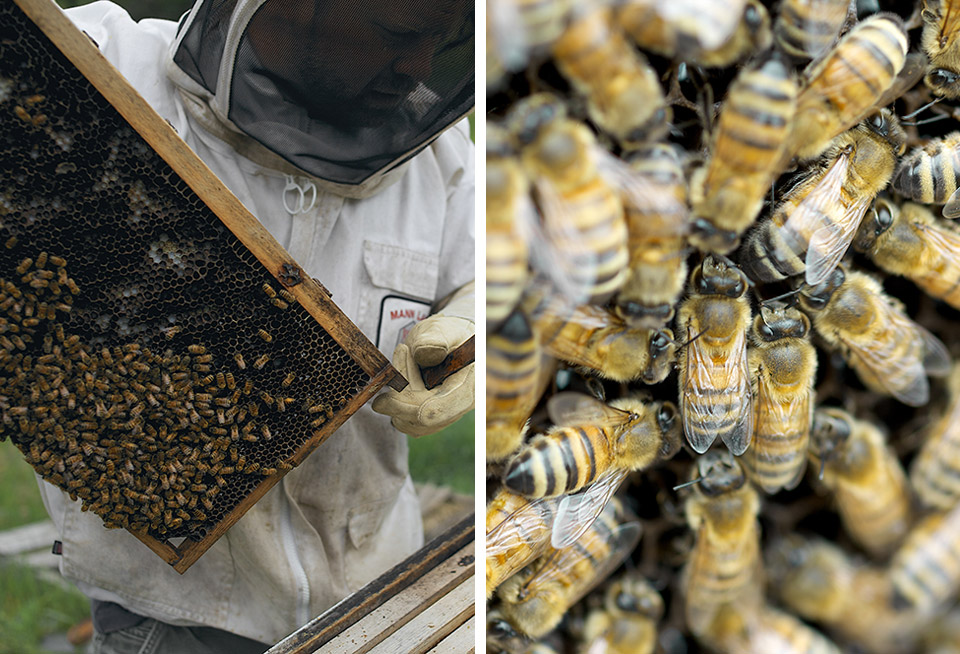
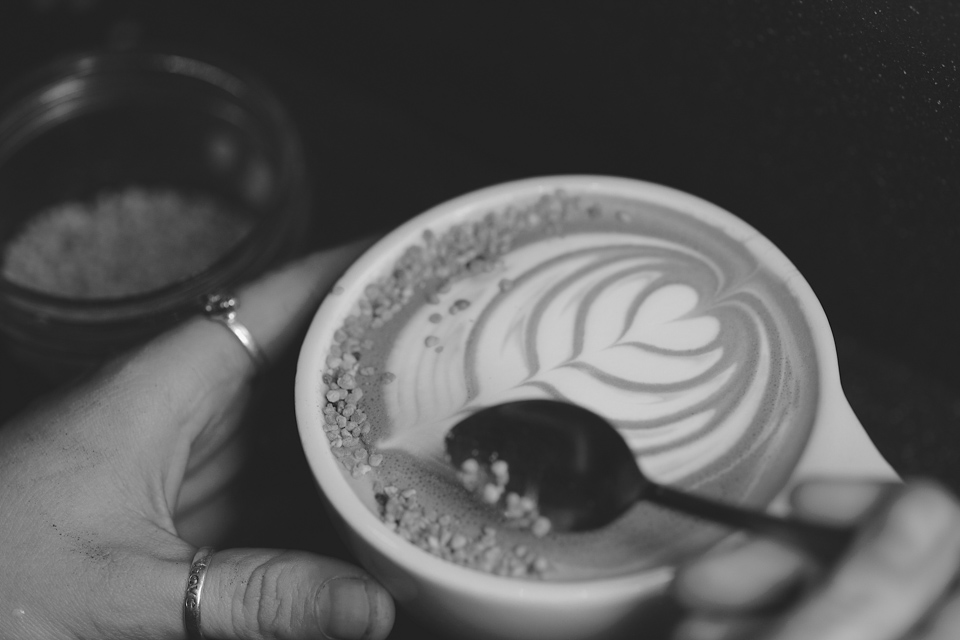
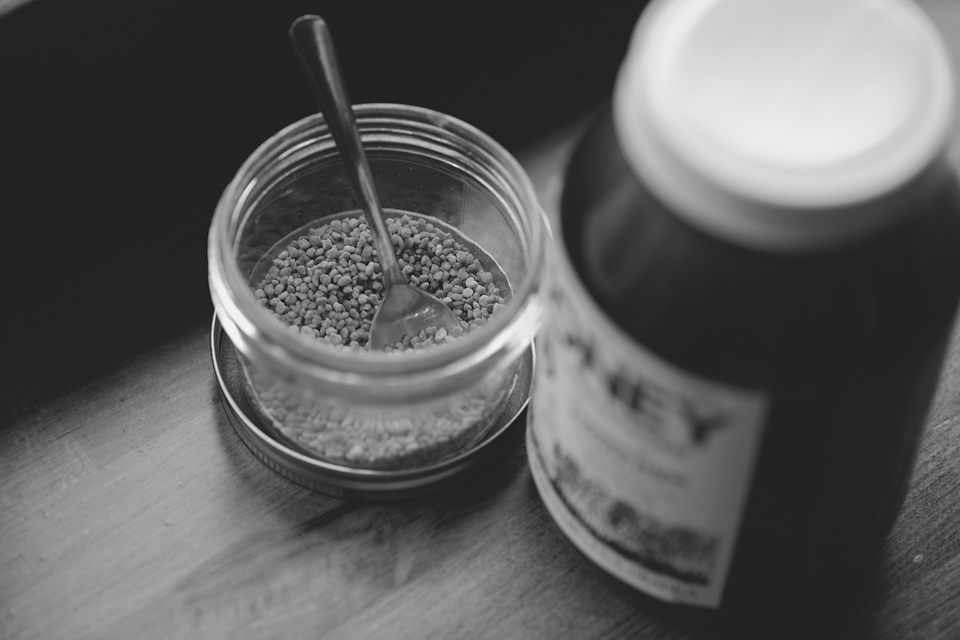

—
To learn more about Black Oak Coffee Roasters, visit their website or follow their journey on twitter.

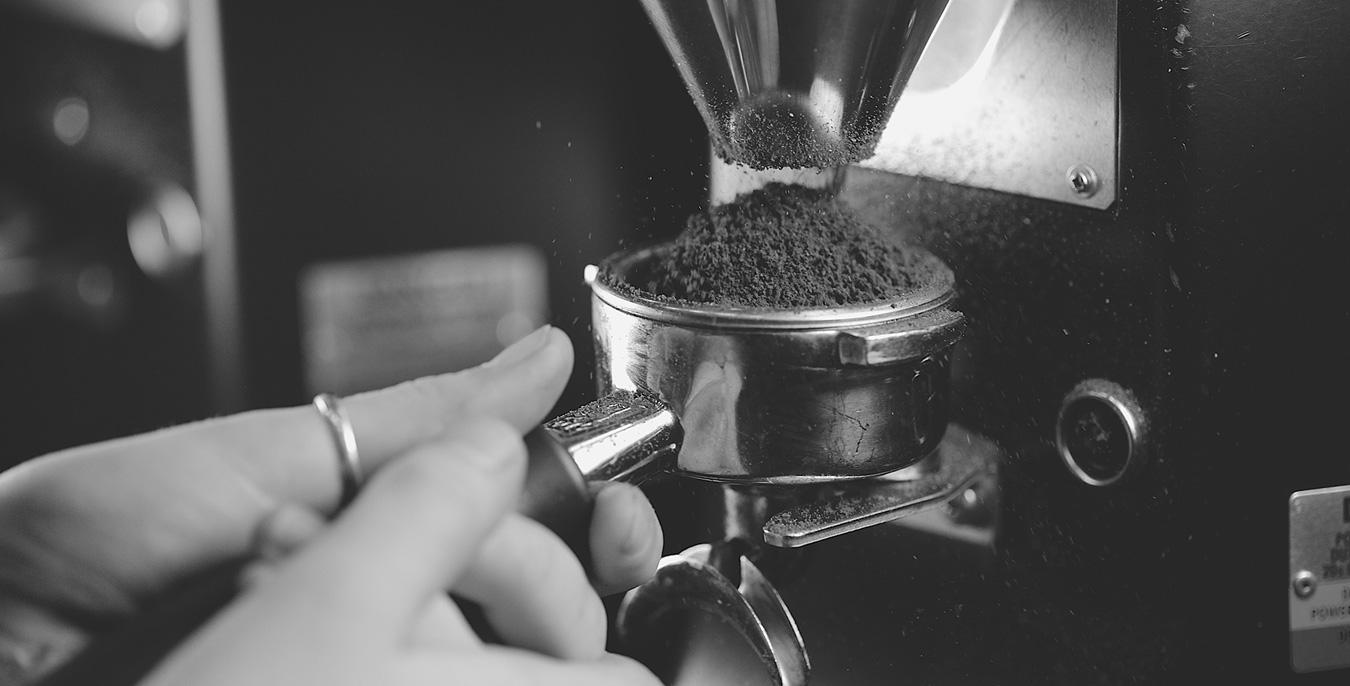

Our comments section is for members only.
Join today to gain exclusive access.